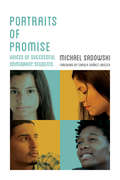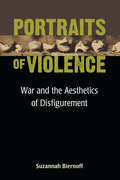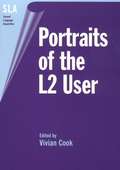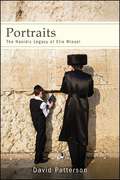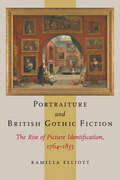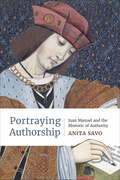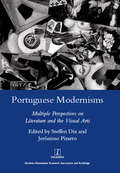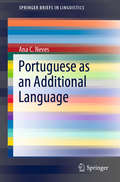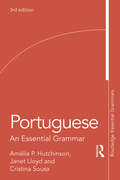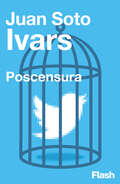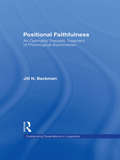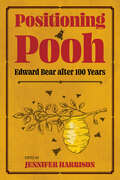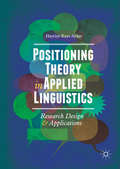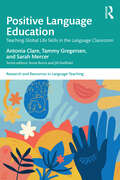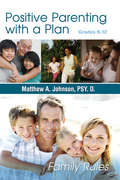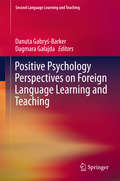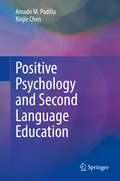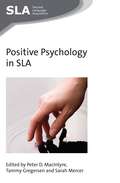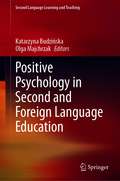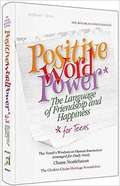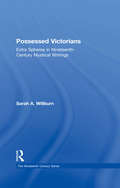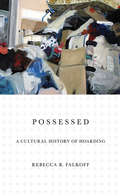- Table View
- List View
Portraits of Promise: Voices of Successful Immigrant Students (Youth Development and Education Series)
by Michael SadowskiBy 2040, more than 30 percent of students in the United States will be immigrants or the children of immigrants. What factors can help these young people thrive in school, despite the many obstacles they face? And how can school staff best support immigrant students&’ academic and personal success? In Portraits of Promise, educators hear from the ultimate experts—successful newcomer students. Drawing on the students&’ own stories, the book highlights the kinds of support and resources that help students engage positively with school culture, establish supportive peer networks, form strong bonds with teachers, manage competing expectations from home and school, and navigate the challenges of high-stakes testing and the college application process.
Portraits of Violence: War and the Aesthetics of Disfigurement
by Suzannah BiernoffPortraits of Violence explores the image and idea of facial disfigurement in one of its most troubling modern formations, as a symbol and consequence of war. It opens with Nina Berman’s iconic photograph Marine Wedding, which provoked a debate about the medical, military, and psychological response to serious combat injuries. While these issues remain urgent, it is equally crucial to interrogate the representation of war and injury. The concepts of valor, heroism, patriotism, and courage assume visible form and do their cultural work when they are personified and embodied. The mutilated or disabled veteran’s body can connote the brutalizing, dehumanizing potential of modern combat. Suzannah Biernoff draws on a wide variety of sources mainly from WWI but also contemporary photography and computer games. Each chapter revolves around particular images: Marine Wedding is discussed alongside Stuart Griffiths’ portraits of British veterans; Henry Tonks’ drawings of WWI facial casualties are compared to the medical photographs in the Gillies Archives; the production of portrait masks for the severely disfigured is approached through the lens of documentary film and photography; and finally the haunting image of one of Tonks’s patients reappears in BioShock, a highly successful computer game. The book simultaneously addresses a neglected area in disability studies; puts disfigurement on the agenda for art history and visual studies; and makes a timely and provocative contribution to the literature on the First World War.
Portraits of the L2 User
by Vivian CookPortraits of the L2 User treats second language users in their own right rather than as failed native speakers. It describes a range of psychological and linguistic approaches to diverse topics about L2 users. It thus provides an innovative overview of current second language acquisition theories, results and methods, seen from a common perspective.
Portraits: The Hasidic Legacy of Elie Wiesel (SUNY series in Contemporary Jewish Thought)
by David PattersonElie Wiesel identified himself as a Vizhnitzer Hasid, who was above all things a witness to the testimony and teaching of the Jewish tradition at the core of the Hasidic tradition. While he is well known for his testimony on the Holocaust and as a messenger to humanity, he is less well known for his engagement with the teachings of Jewish tradition and the Hasidic heritage that informs that engagement. Portraits illuminates Wiesel's Jewish teachings and the Hasidic legacy that he embraced by examining how he brought to life the sages of the Jewish tradition. David Patterson reveals that Wiesel's Hasidic engagement with the holy texts of the Jewish tradition does not fall into the usual categories of exegesis or hermeneutics and of commentary or textual analysis. Rather, he engages not the text but the person, the teacher, and the soul. This book is a summons to remember the testimony reduced to ashes and the voices that cry out from those ashes. Just as the teaching is embodied in the teachers, so is the tradition embodied in their portraits.
Portraiture and British Gothic Fiction: The Rise of Picture Identification, 1764–1835
by Kamilla ElliottExamples from British writers of the eighteenth and nineteenth centuries show how portraits became a new mode of identity for the middle class.Traditionally, kings and rulers were featured on stamps and money, the titled and affluent commissioned busts and portraits, and criminals and missing persons appeared on wanted posters. British writers of the eighteenth and nineteenth centuries, however, reworked ideas about portraiture to promote the value and agendas of the ordinary middle classes. According to Kamilla Elliott, our current practices of "picture identification" (driver’s licenses, passports, and so on) are rooted in these late eighteenth- and early nineteenth-century debates.Portraiture and British Gothic Fiction examines ways writers such as Horace Walpole, Ann Radcliffe, Mary Shelley, and C. R. Maturin as well as artists, historians, politicians, and periodical authors dealt with changes in how social identities were understood and valued in British culture—specifically, who was represented by portraits and how they were represented as they vied for social power.Elliott investigates multiple aspects of picture identification: its politics, epistemologies, semiotics, and aesthetics, and the desires and phobias that it produces. Her extensive research not only covers Gothic literature’s best-known and most studied texts but also engages with more than 100 Gothic works in total, expanding knowledge of first-wave Gothic fiction as well as opening new windows into familiar work.
Portraying Authorship: Juan Manuel and the Rhetoric of Authority (Toronto Iberic #88)
by Anita SavoPortraying Authorship argues that the medieval Castilian writer Juan Manuel fashioned a seemingly modern authorial persona from the accumulation and synthesis of medieval authorial roles. In the manuscript culture of medieval Castile and across Latin Europe, writers typically referred to their work in ways that corresponded to their role in the bookmaking process: scribes took credit for preserving the works of others, compilers for combining disparate texts in productive ways, commentators for explaining obscure works, and authors for writing their own words. Combining literary analysis with book history, Anita Savo reveals how Juan Manuel forged his authorial persona, “Don Juan,” by adopting all four medieval writerly roles, thereby reaping the ethical benefits of each one. Each chapter in Portraying Authorship highlights a different authorial role to show how Don Juan – and others who wrote in his name – assumed responsibility for that role and adapted its rhetoric to his vernacular literary project. The book concludes that Don Juan’s authorial self-portrait not only gave the humanist writers of the fifteenth century a model to imitate, but also persuaded subsequent scribes, editors, and translators to portray him as an individual author. In doing so, Portraying Authorship illuminates how Juan Manuel’s concept of authorship helped to secure him a privileged position in narratives of Spanish literary history.
Portuguese Modernisms: Multiple Perspectives in Literature and the Visual Arts
by Steffen DixFor a more encompassing and stimulating picture of Modernism seen as a movement of the 20th century, a broad spectrum of work across many countries we must explore its diversity. Portuguese Modernism manifested itself both in visual art and in literature, and made a vigorous contribution to this time of profound cultural change. Indeed, the sociocultural transformations that marked the early 20th century in Portugal are still current. This volume provides a critical guide for students and teachers, contributed by an array of scholars with unparalleled knowledge of the period, its artists and its writers. Steffen Dix is Research Fellow at the Institute of Social Science, University of Lisbon; Jeronimo Pizarro is Research Fellow at the Linguistics Centre, University of Lisbon.
Portuguese as an Additional Language (SpringerBriefs in Linguistics)
by Ana C. NevesThis book focuses on Portuguese as an additional language and its young learners in threecase studies within the Portuguese-speaking world: Portuguese as a second language inCape Verde, Portuguese as a heritage language in Switzerland and Portuguese as a foreignlanguage in Macao SAR. The term “additional language” is used as an umbrella term for allthree contexts.An analysis of these three case studies is presented, with a focus on the organization of explicit and implicit language policies with regards to population mobility and also motivational issues, language attitudes and language use by the sample population.
Portuguese: An Essential Grammar (Routledge Essential Grammars)
by Janet Lloyd Amelia P. Hutchinson Cristina SousaThis new edition of Portuguese: An Essential Grammar is a practical reference guide to the most important aspects of modern European Portuguese. Combining traditional and function-based grammar, the book sets out the complexities of Portuguese in short, readable sections. Explanations are clear, free from jargon and substantiated by examples. Throughout, the emphasis is on Portuguese as used by native speakers. This third edition: reflects the new orthographic agreement; includes an expanded section on verbs and pronouns, as well as a new section on syntax; provides authentic examples to illustrate grammar in context; focuses on Portuguese as used in Portugal and Africa; links to Basic Portuguese: A Grammar and Workbook, which offers a valuable set of language practice exercises; includes a detailed contents list and index for easy access to information. An important addition to Routledge’s collection of grammars on the variants of Portuguese, this is an ideal reference source for the learner and user of European Portuguese. It is suitable for either independent study or for students in schools, colleges, universities and adult classes of all types.
Poscensura (Flash Ensayo): ¿Somos tan cabrones como parece por las redes sociales?
by Juan Soto IvarsEntonces... ¿somos tan cabrones como parece por las redes sociales? En palabras del autor «¿Bastarían ciento cuarenta caracteres para que un psiquiatra diagnosticase una psicopatía?» Juan Soto Ivars pone sobre la mesa el odio artificial que se gasta en las redes haciendo hincapié en todas aquellas personas que por sus mensajes podrían ser tachadas de «infames», «piscópatas» o «inmorales». El tema no es tan sencillo de analizar cuando descubres que las redes sociales enmascaran al verdadero individuo.
Positional Faithfulness: An Optimality Theoretic Treatment of Phonological Asymmetries (Outstanding Dissertations in Linguistics)
by Jill N. BeckmanFirst Published in 1999. Routledge is an imprint of Taylor & Francis, an informa company.
Positioning Gender and Race in (Post)colonial Plantation Space
by Eve Walsh StoddardStoddard uses the Anglophone Caribbean and Ireland to examine the complex inflections of women and race as articulated in-between the colonial discursive and material formations of the eighteenth century and those of the (post)colonial twentieth century, as structured by the defined spaces of the colonizers' estates.
Positioning Pooh: Edward Bear after One Hundred Years (Children's Literature Association Series)
by Jennifer HarrisonContributions by Megan De Roover, Jennifer Harrison, Sarah Jackson, Zoe Jaques, Nada Kujundžić, Ivana Milković, Niall Nance-Carroll, Perry Nodelman, David Rudd, Jonathan Chun Ngai Tsang, Nicholas Tucker, Donna Varga, and Tim WadhamOne hundred years ago, disparate events culminated in one of the most momentous happenings in the history of children’s literature. Christopher Robin Milne was born to A. A. and Dorothy “Daphne” Milne; Edward Bear, a lovable stuffed toy, arrived on the market; and a living, young bear named Winnie settled in at the London Zoo. The collaboration originally begun by the Milnes, E. H. and Florence Shepard, Winnie herself, and the many toys and personalities who fed into the Pooh legend continued to evolve throughout the twentieth and twenty-first centuries to become a global phenomenon. Yet even a brief examination of this sensation reveals that Pooh and his adventures were from the onset marked by a rich complexity behind a seeming simplicity and innocence. This volume, after a decades-long lull in concentrated Pooh scholarship, seeks to highlight the plurality of perspectives, modes, and interpretations these tales afford, especially after the Disney Corporation scooped its paws into the honeypot in the 1950s. Positioning Pooh: Edward Bear after One Hundred Years argues the doings of Pooh remain relevant for readers in a posthuman, information-centric, media-saturated, globalized age. Pooh's forays destabilize social certainties on all levels—linguistic, ontological, legal, narrative, political, and so on. Through essays that focus on geography, language, narrative, characterization, history, politics, economics, and a host of other social and cultural phenomena, contributors to this volume explore how the stories open up discourses about identity, ethics, social relations, and notions of belonging. This first volume to offer multiple perspectives from multiple authors on the Winnie-the-Pooh books in a single collection focuses on and develops approaches that bring this classic of children’s literature into the current era. Essays included not only are of relevance to scholars with an interest in Pooh, Milne, and the “golden age” of children’s literature, but also showcase the development of children’s literature scholarship in step with exciting modern developments in literary theory.
Positioning Theory in Applied Linguistics: Research Design and Applications
by Hayriye Kayı-AydarThis book is about Positioning Theory (Davies & Harré, 1990) and its potential applications in bilingual and multilingual contexts involving teachers, learners, speakers, and users of a second/foreign or additional language. By using Positioning Theory as a theoretical lens and analytical approach, the author illustrates how various social and poststructural concepts in applied linguistics and language teacher education, including identity, agency, language socialization, classroom participation, and intercultural communication, can be investigated and better understood. The book adds a new perspective to the growing body of multidisciplinary literature in the areas of L2 teacher education and classroom learning, and includes step-by-step guidelines for positioning analysis, insights and implications for classroom practice, as well as suggested directions for future research. It will be of particular interest to language teachers and teacher educators, as well as students and scholars of applied linguistics more broadly.
Positive Language Education: Teaching Global Life Skills in the Language Classroom (Research and Resources in Language Teaching)
by Antonia Clare Tammy Gregersen Sarah MercerThis innovative book integrates theory and practice in the teaching of contemporary life skills alongside and as part of language teaching that looks at the 'whole student'.Introducing their Positive Language Education framework, the authors expertly outline the theoretical background for integrating linguistic objectives with a wide range of holistic 21st century competencies including emotional regulation, well-being, ecoliteracy, and global citizenship. They then offer a unique, practical array of concrete suggestions and hands-on, research-based activities to help language educators develop their repertoire as Positive Language Educators, including how to conduct their own research on this subject. This reader-friendly resource gives pre- and in-service FL/L2 teachers the tools and confidence to understand and implement these principles in the classroom and beyond.Advanced students and researchers of applied linguistics, education, and psychology, as well as curriculum developers, teacher trainers, and aspiring teachers around the world – and their students – will benefit from this unique book.
Positive Parenting with a Plan: The Game Plan for Parenting Has Been Written!
by Matthew JohnsonThe Game Plan For Parenting Has Been Written!Although there are many books with good ideas for parents, as a Mom or Dad, how do you take those good ideas and actually implement them? Positive Parenting with a Plan is the fastest growing parenting program in the U.S.A. and Canada.
Positive Psychology Perspectives on Foreign Language Learning and Teaching
by Danuta Gabryś-Barker Dagmara GałajdaThis book introduces readers to the principles of a fairlynew branch of psychology - positive psychology - and demonstrates how they canbe applied in the context of second language acquisition in a naturalenvironment and in instructed foreign language (FL) learning. It focuses bothon the well-being and success of the learner and the professional and personalwell-being of the teacher. Further, the book stresses the importance of thepositive emotions and character strengths of those involved in the process oflanguage learning and teaching, as well as the significant role played byenabling institutions such as school and, at the micro-level, individual FLclasses.
Positive Psychology and Second Language Education
by Amado M. Padilla Xinjie ChenThis book applies a positive psychology perspective to theory, research and practice related to the teaching and learning of second/foreign languages (L2) for all ages, incorporating related fields of applied linguistics, education, and psychology. Central topics include positive psychological, cultural and social aspects of L2 learning experiences and environment contexts for usage of the L2, individual traits and strengths in L2 learners and teachers that enable people to thrive within the contexts of two or more languages. Chapters cover both positive second language &“caring&”, &“doing&” and &“being&”, focusing on the necessary factors for successful language learning as well as its impact on self and well-being. Positive Psychology and Second Language Education aims to provide a holistic approach to understanding L2 teaching and learning from the perspective of positive psychology. It will be a useful resource for researchers and students in psychology, education, and L2 fields, as well as professional educators seeking to better understand the cognitive and linguistic research surrounding bilingualism.
Positive Psychology in SLA
by Tammy Gregersen Peter D. MacintyrePositive psychology is the scientific study of how human beings prosper and thrive. This is the first book in SLA dedicated to theories in positive psychology and their implications for language teaching, learning and communication. Chapters examine the characteristics of individuals, contexts and relationships that facilitate learning: positive emotional states such as love, enjoyment and flow, and character traits such as empathy, hardiness and perseverance. The contributors present several innovative teaching ideas to bring out these characteristics among learners. The collection thus blends new teaching techniques with cutting-edge theory and empirical research undertaken using qualitative, quantitative and mixed-methods approaches. It will be of interest to SLA researchers, graduate students, trainee and experienced teachers who wish to learn more about language learning psychology, individual differences, learner characteristics and new classroom practices.
Positive Psychology in Second and Foreign Language Education (Second Language Learning and Teaching)
by Olga Majchrzak Katarzyna BudzińskaThis book demonstrates how resources taken from positive psychology can benefit both teachers and learners. Positive psychology is the empirical study of how people thrive and flourish. This book explores a range of topics, such as affectivity and positive emotions, engagement, enjoyment, empathy, positive institutions, a positive L2 self-system, as well as newly added Positive Language Education. Some papers in this collection introduce new topics such as the role of positive psychology in international higher education, a framework for understanding language teacher well-being from an ecological perspective, or positive institutional policies in language education contexts.
Positive Social Acts: A Metapragmatic Exploration of the Brighter and Darker Sides of Sociability (Elements in Pragmatics)
by Roni DanzigerSociability is friendly behavior that is performed by a variety of positive social acts that are aimed to establish, promote, or restore relationships. However, attempts to achieve these interactional goals can fail or backfire; moreover, interactants may abuse these strategies. A pragmatic focus on positive social acts illuminates the ways they succeed in promoting sociability and why they sometimes fail to enhance social relations. This Element analyzes positive social actions receiving positive and negative meta-pragmatic labels, such as firgun and flattery, in the Hebrew speaking community in Israel. Adopting a meta-pragmatic methodology enables a differentiation between positive communication and its evaluation as (in)appropriate in context. The conclusion discusses the fuzzy line between acceptable and unacceptable positive behavior and the benefits and perils of deploying positive social acts in interaction. It also suggests a conceptualization of the darker and brighter sides of sociability as intrinsically connected, rather than polar ends.
Positive Word Power: The Language Of Friendship And Happiness: For Teens: The Torah Wisdom On Human Interaction Arranged For Daily Study
by Chana Nestlebaum Shaindy AppelbaumFriends, classmates, parents, siblings... they're what we cherish most in life. Now you can learn how to protect your greatest treasure from damage, keeping your relationships shining bright. It's all in the power of the words you speak. Learn the answers to such vital everyday questions as: Is a joke always funny? Is criticism always constructive? Does praise always build others up? How can I deal kindly with someone who annoys me? What if someone is not my type? How should I express anger? In 2009, The Chofetz Chaim Heritage Foundation produced Positive Word Power, based on "The Power of Words" by Rabbi Zelig Pliskin, which shone a bright light on the issue of ona'as devarim — hurting others with words. This daily learning sefer has been taken up by thousands of Jewish men and women who have learned how to recognize and change those thoughts and character traits that spur nice people to say hurtful things. Now The Chofetz Chaim Heritage Foundation brings these priceless lessons to you, teenage readers, through practical scenarios, strategies and discussion questions that reflect the unique challenges of your life. Positive Word Power for Teens will sensitize you to the impact of words you use and hear every day and help you shed negative habits. Through our words, each of us has the power to paint for ourselves a bright and loving world, or a dark and lonely one. With an investment of just a few minutes a day, you can learn how to choose the beautiful hues of kindness and sensitivity, and paint a world you'll be happy to live in today and for the rest of your life!
Possessed Victorians: Extra Spheres in Nineteenth-Century Mystical Writings (The Nineteenth Century Series)
by Sarah A. WillburnIn her absorbing study of nineteenth-century mystical writings, Sarah Willburn formulates a new conception of individualism that offers a fresh look at Victorian subjectivity. Drawing upon extensive archival work in the British Library, Willburn analyzes séance accounts, novels about mediumship, and metaphysical treatises to make important connections between contemporary writings on mysticism and fictional works. Willburn presents the theories of compelling characters such as Newton Crosland and Lois Waisbrooker and provides exciting new readings of well-known texts by Charlotte Brontë, Eliot, Martineau, and Corelli. An understanding of the Victorian fascination with mysticism, Willburn argues, leads to a better appreciation of cultural constructions of the citizen in England and of the public sphere. She introduces two key concepts against the backdrop of popular mysticism: "possessed individualism," a model for Victorian individualism based on spiritual possession, and "extra spheres," which complicate the traditional binary opposition of public and private. Together, these formulations urge us to rethink our views of Victorian political economy and gender as they pertain to mystical and religious practices.
Possessed by Memory: The Inward Light of Criticism
by Harold BloomIn arguably his most personal and lasting book, America's most daringly original and controversial critic gives us brief, luminous readings of more than eighty texts by canonical authors-- texts he has had by heart since childhood.Gone are the polemics. Here, instead, in a memoir of sorts--an inward journey from childhood to ninety--Bloom argues elegiacally with nobody but Bloom, interested only in the influence of the mind upon itself when it absorbs the highest and most enduring imaginative literature. He offers more than eighty meditations on poems and prose that have haunted him since childhood and which he has possessed by memory: from the Psalms and Ecclesiastes to Shakespeare and Dr. Johnson; Spenser and Milton to Wordsworth and Keats; Whitman and Browning to Joyce and Proust; Tolstoy and Yeats to Delmore Schwartz and Amy Clampitt; Blake to Wallace Stevens--and so much more. And though he has written before about some of these authors, these exegeses, written in the winter of his life, are movingly informed by "the freshness of last things."As Bloom writes movingly: "One of my concerns throughout Possessed by Memory is with the beloved dead. Most of my good friends in my generation have departed. Their voices are still in my ears. I find that they are woven into what I read. I listen not only for their voices but also for the voice I heard before the world was made. My other concern is religious, in the widest sense. For me poetry and spirituality fuse as a single entity. All my long life I have sought to isolate poetic knowledge. This also involves a knowledge of God and gods. I see imaginative literature as a kind of theurgy in which the divine is summoned, maintained, and augmented."
Possessed: A Cultural History of Hoarding
by Rebecca R. FalkoffIn Possessed, Rebecca R. Falkoff asks how hoarding—once a paradigm of economic rationality—came to be defined as a mental illness. Hoarding is unique among the disorders included in the American Psychiatric Association's DSM-5, because its diagnosis requires the existence of a material entity: the hoard. Possessed therefore considers the hoard as an aesthetic object produced by clashing perspectives about the meaning or value of objects. The 2000s have seen a surge of cultural interest in hoarding and those whose possessions overwhelm their living spaces. Unlike traditional economic elaborations of hoarding, which focus on stockpiles of bullion or grain, contemporary hoarding results in accumulations of objects that have little or no value or utility. Analyzing themes and structures of hoarding across a range of literary and visual texts—including works by Nikolai Gogol, Arthur Conan Doyle, Carlo Emilio Gadda, Luigi Malerba, Song Dong and E. L. Doctorow—Falkoff traces the fraught materialities of the present to cluttered spaces of modernity: bibliomaniacs' libraries, flea markets, crime scenes, dust-heaps, and digital archives. Possessed shows how the figure of the hoarder has come to personify the economic, epistemological, and ecological conditions of modernity.Thanks to generous funding from New York University and its participation in TOME (Toward an Open Monograph Ecosystem), the ebook editions of this book are available as Open Access (OA) volumes from Cornell Open (cornellopen.org) and other Open Access repositories.
